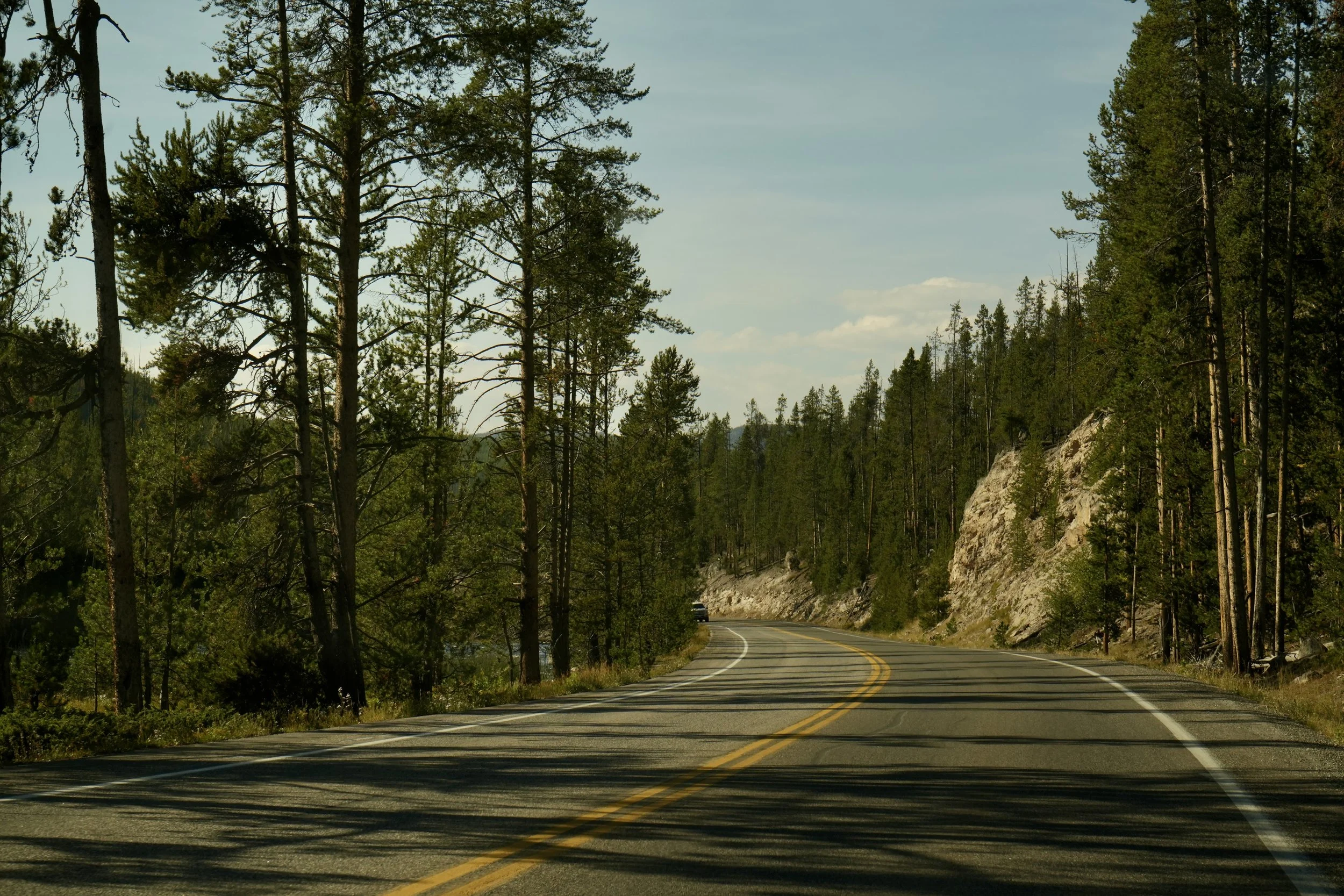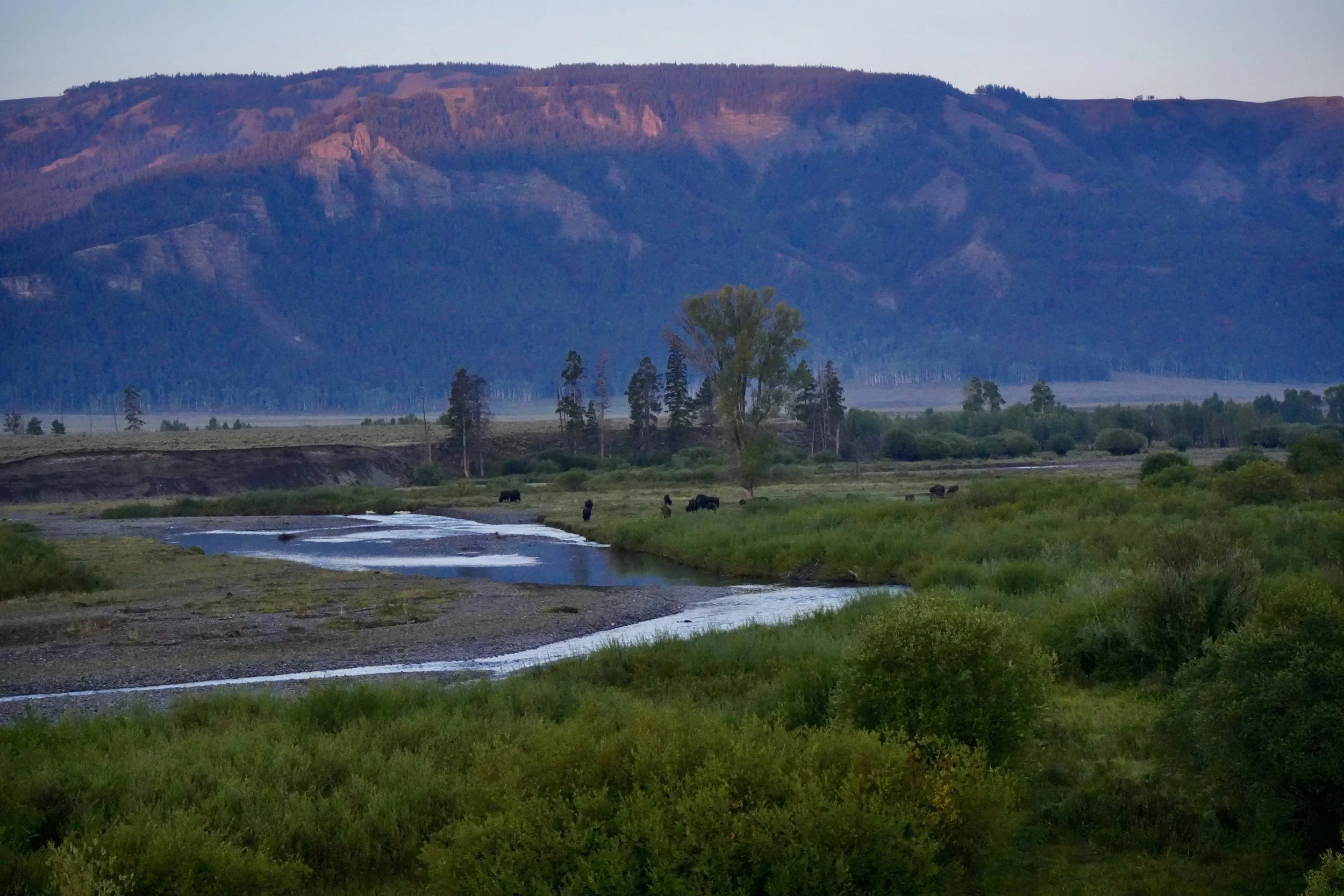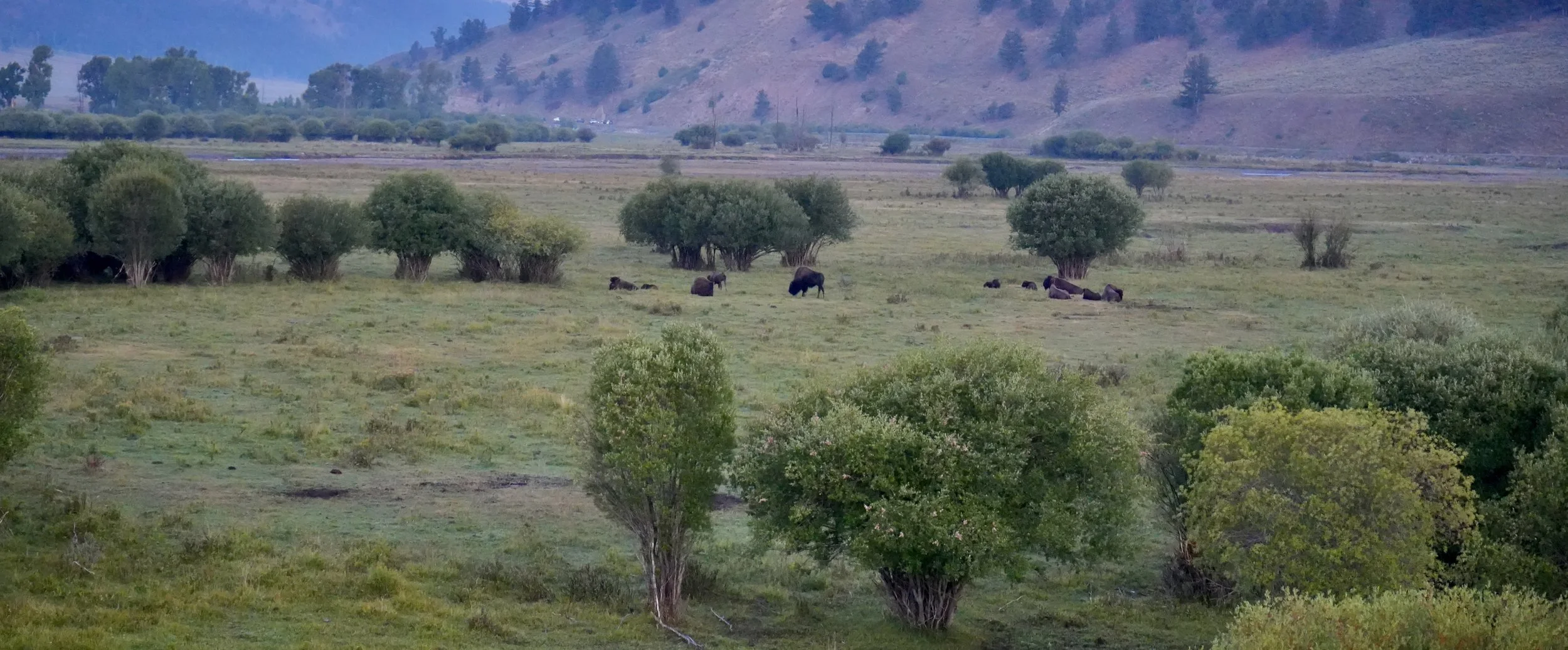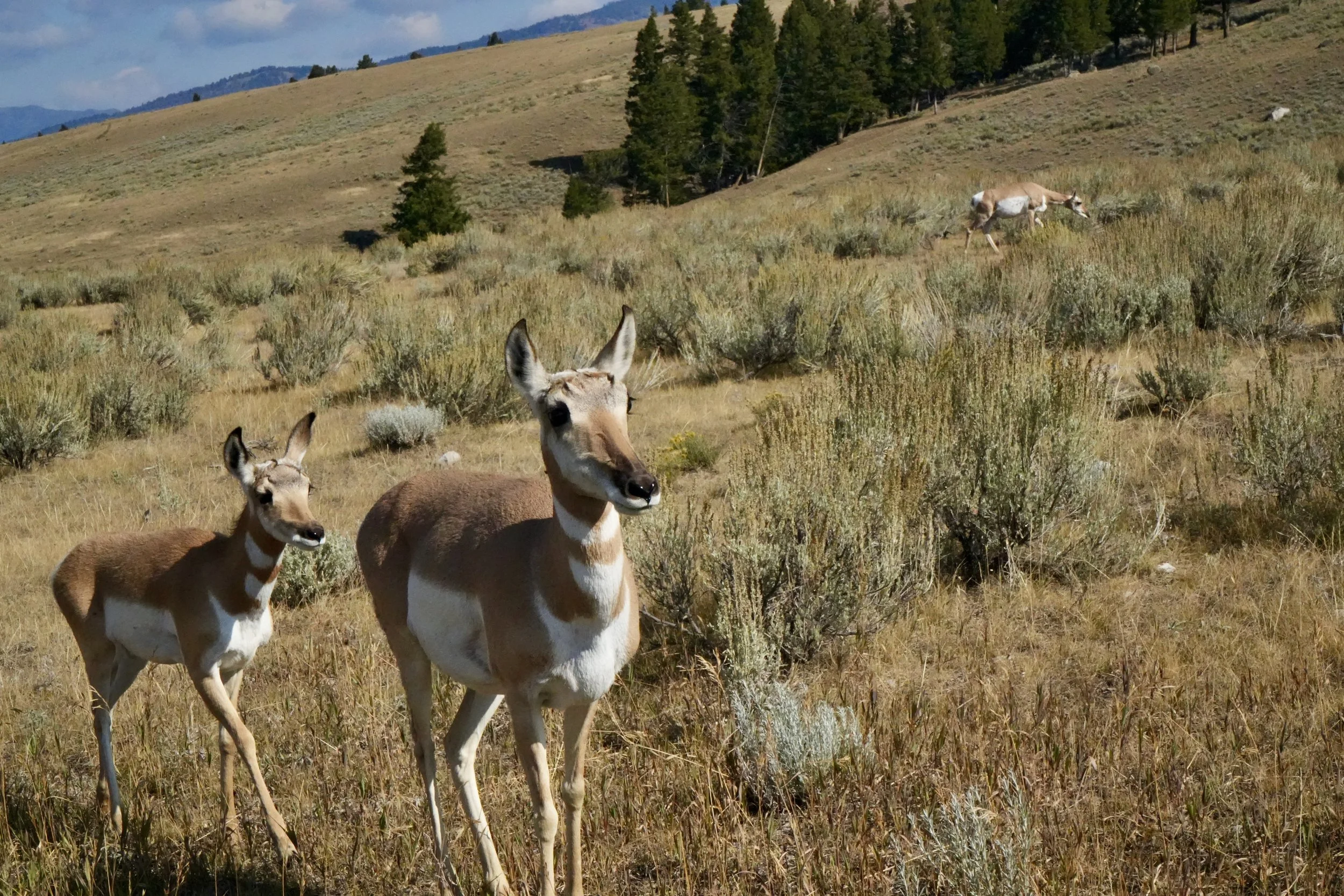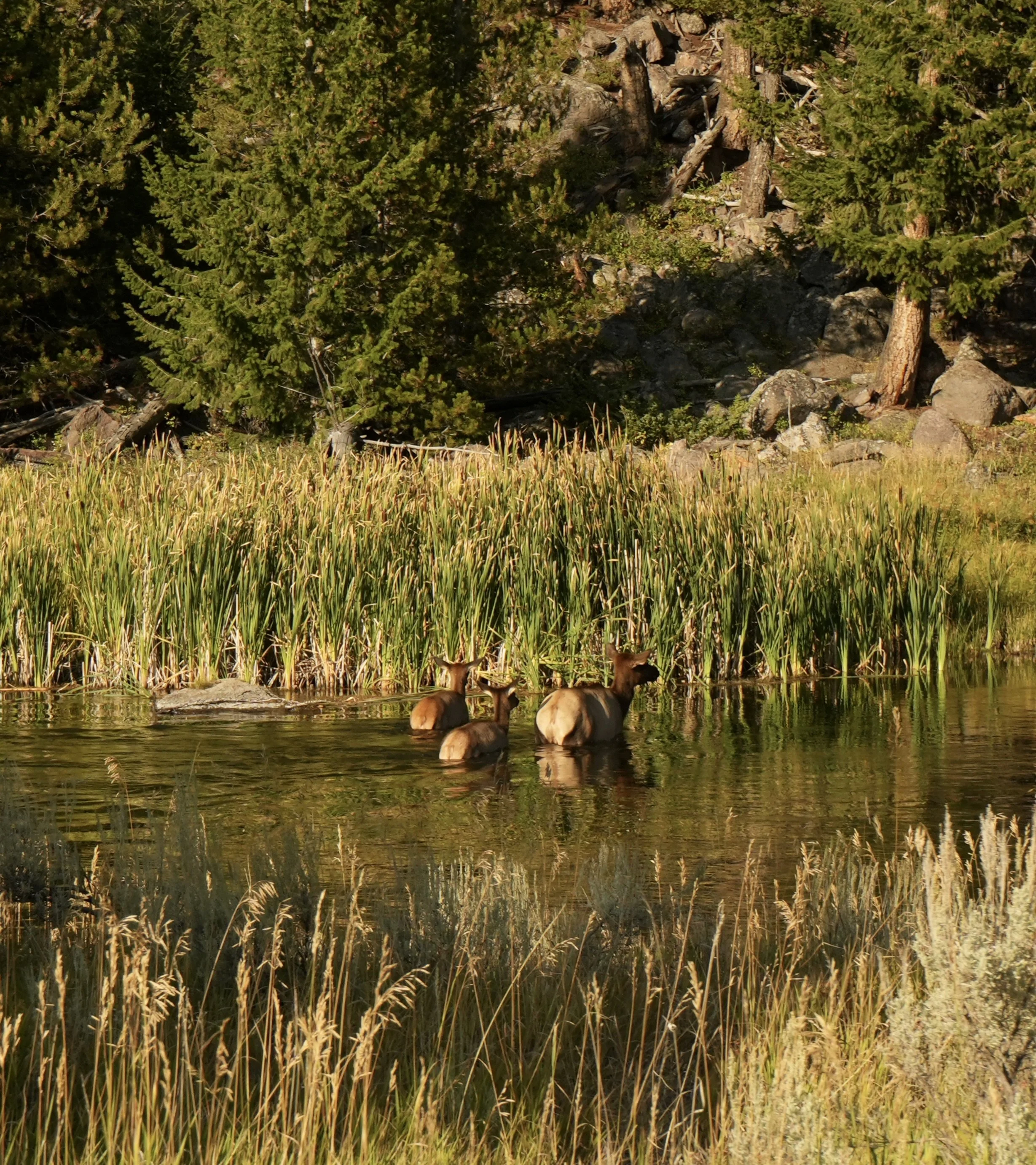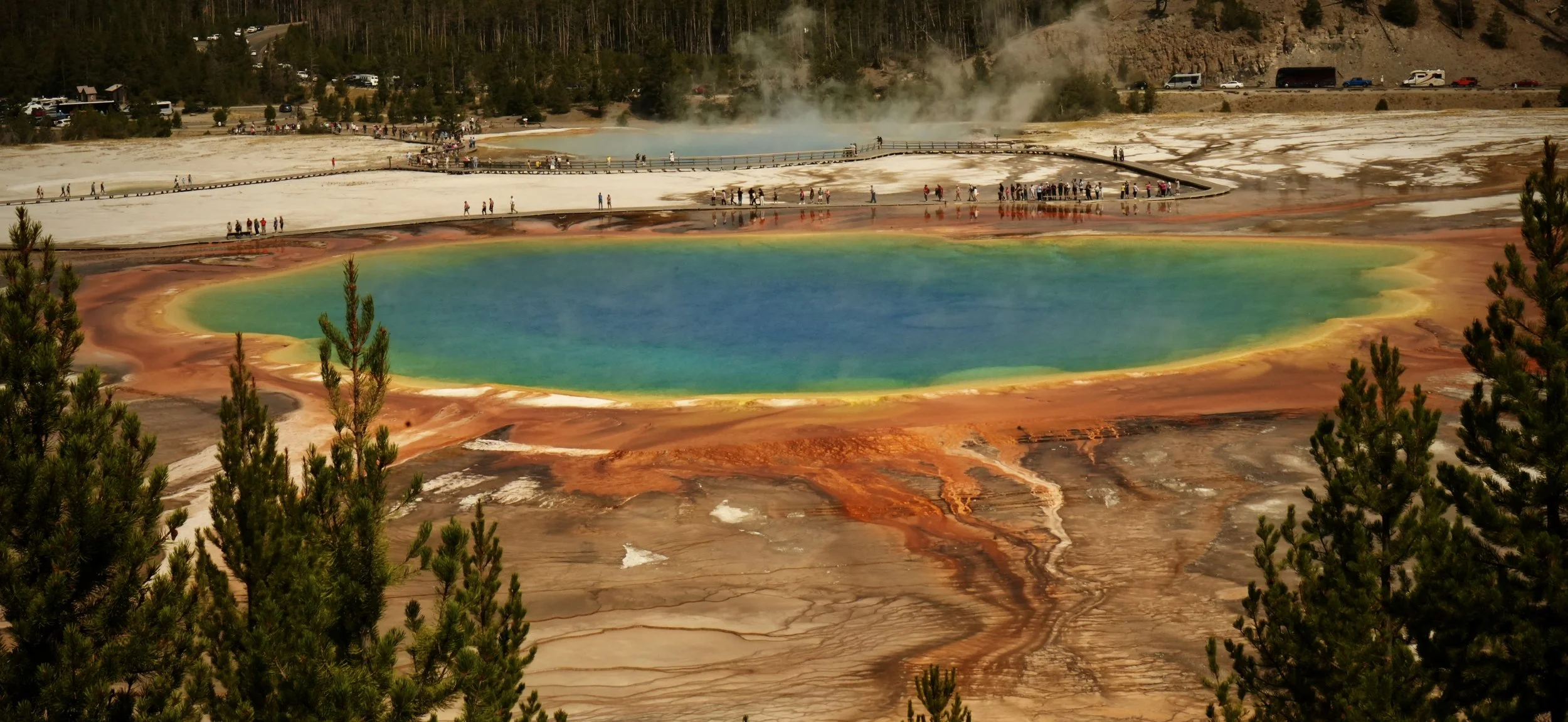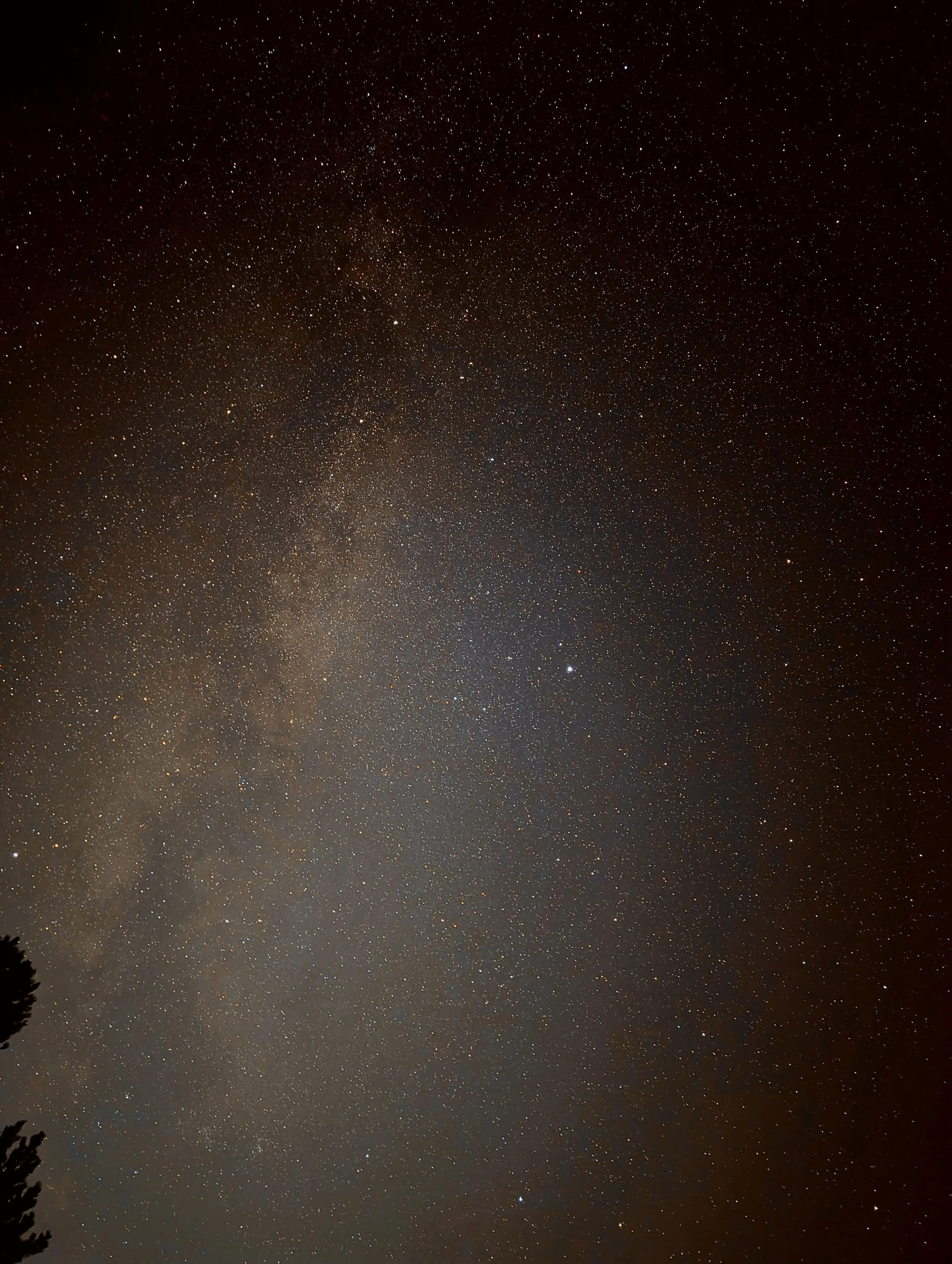Yellowstone: A Journey That Changed Me
The Road That Led Us There
We started in Seattle, piling into the car with snacks, playlists, and that mix of excitement and drowsy anticipation that only long road trips bring. The drive to West Yellowstone was no small feat — hours stretched into a rhythm of coffee stops, gas stations, and endless skies. Washington gave way to rolling hills, then Montana’s wide, untamed landscapes.
There’s something meditative about driving long distances. You fall into a silence, not because you’ve run out of things to say, but because the road lulls you into reflection. I remember staring out at the fields, thinking how easy it is to forget that the world is vast, and we are such a tiny part of it.
By the time we rolled into West Yellowstone, I already felt lighter — like I’d left behind the noise of everyday life somewhere along the highway.
Misty Mornings in Hayden and Lamar Valley
If Yellowstone is the crown jewel of America’s national parks, then Hayden and Lamar Valley are its heart. We drove there at dawn, the world still half-asleep. Mist clung low over the meadows, the kind of fog that feels alive, curling and shifting as the sun tried to push through.
The silence was breathtaking. Every now and then, it was broken by the distant bellow of a bison or the rustle of something unseen in the grass. It felt less like sightseeing and more like entering someone else’s home — nature’s home — where we were only guests.
And then came the wildlife.
A Parade of Wild Souls
If you told me there are more bison than people in Yellowstone, I wouldn’t even argue. They were everywhere. Herds of them grazing, crossing roads like they owned them, lounging on riverbanks. Some walked so close to the car that we held our breath — not out of fear, but awe. They are massive, majestic, and completely unbothered by our existence.
Then there were the pronghorns. Oh, the pronghorns! With their delicate faces and curious eyes, they’d approach cars one by one, almost like they were greeting us personally. They’d stop, stare, and — I swear — pose for the cameras, before trotting off to the next vehicle. They’re as if designed to be cute.
We spotted elk families lounging under trees for an afternoon siesta, their antlers like crowns against the light. Another group splashed in the river, shaking water off in the most playful, unselfconscious way.
And then — the birds. A bald eagle soaring across the valley, wings stretched wide, cutting through the sky with such grace that I almost forgot to breathe.
But perhaps the most unforgettable moments were in Hayden Valley. We watched a wolf pack and a bear family co-exist in an uneasy truce — only for the mood to shift when a grizzly decided the bison carcass was his alone. The wolves scattered, the bears backed off, and suddenly the balance of power was on full display. It was raw, unfiltered life, the kind you never forget.
Somewhere else, a lone coyote was walking just beside the road— and I couldn’t help but laugh, thinking of the cartoon “Road Runner.” Except this was no clumsy animated villain, but a sleek, determined creature moving with quiet confidence.
Colors That Don’t Belong on Earth
And then, of course, the land itself. The Grand Prismatic Spring was like standing in front of a painting where the artist had gone a little wild with the palette. Fiery oranges faded into golden yellows, which gave way to turquoise blues so deep they felt impossible. Photos don’t prepare you for the scale, or the sheer audacity of it.
Norris Geyser Basin was another revelation — bubbling pools, steaming vents, and ground that seemed alive, shifting, whispering, hissing. Old Faithful erupted right on time, powerful and dramatic, like nature flexing just to remind us who’s in charge.
At every turn, Yellowstone seemed to say: Look. Wonder. Remember your place in all this.
Nights Under the Stars
Our last night was nothing short of magical. We stayed in a glamping-style tent — canvas walls, cozy beds, lanterns glowing softly. When the night deepened, we stepped outside, and for the first time in my life, I saw the Milky Way.
It stretched across the sky in a band of light, millions of stars crowding together, some bright, some faint, all impossibly far away. I stood there, neck craned, heart wide open, thinking: how often do we forget this is even above us?
There’s something about stargazing that makes you feel both small and infinite at the same time. I thought about all the people who had stood under this same sky long before me, and how many would after. It was grounding, humbling, and utterly liberating.
What Yellowstone Gave Me
Travel, I’ve come to realize, is not about ticking off sights. It’s about what those sights do to you. Yellowstone stripped me of hurry. It slowed me down to nature’s rhythm — the unhurried pace of bison, the patient soaring of eagles, the quiet persistence of geysers.
It reminded me that the world is wild and ancient, far beyond the scope of our routines and deadlines. That beauty doesn’t need an algorithm to trend; it simply exists. That life — raw, messy, and beautiful — unfolds best when we’re fully present to witness it.
When I think back on Yellowstone, I don’t just remember the colors of the Grand Prismatic, or the mist in Hayden Valley, or even the wolf pack. I remember how it made me feel: small, awestruck, and deeply alive.
And maybe that’s the point of journeys like these. They don’t just give you photographs. They change the way you see everything after.
